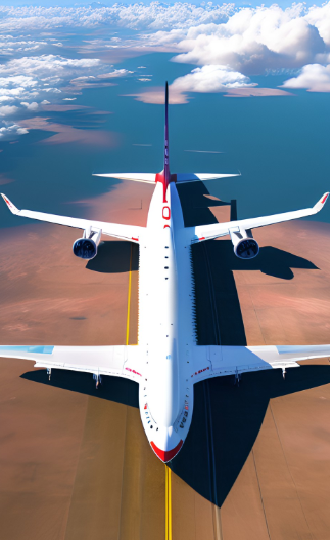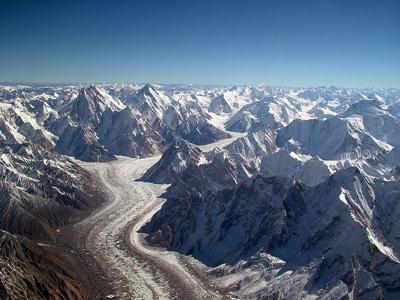- Air Homepage
- Upper Atmosphere
- How to Become a Pilot
Here's how to become a pilot
Read more about activities and careers.
Wondering how to become a pilot? Owning your own plane, or even piloting a jumbo jet. There are lots of people who want that same thing, and it's much closer than you think.
Take a look at activities and careers and get started. Do you dream of flying? This quick page will guide you through a bit about aviation, making becoming a pilot easier than you think.
Explore your aeronautical odyssey, career opportunities, navigating the skies professionally, military aviation, and maybe start your pilot journey.
Whether you want to navigate commercial skies or soar as a fighter pilot, this intro has you covered. Turn your aviation dreams into reality!
There are a few basic requirements. First of all, you have to be at least sixteen. A physical exam is also required.
Taking an introductory flying lesson is a good first step to becoming a pilot. It might not be cheap, but it will give you a taste of flying and help you decide if this is what you want to do.
Check the yellow pages, or contact an organization like AOPA - the Aircraft Owners and Pilots Association - to find a flight school. You can get in touch with someone who can introduce you.
Joining the Air Force is one way to learn how to fly. They're always looking for qualified people to learn to fly.
Get a job at an airport. Learn everything you can about planes by hanging out with pilots and working for airlines, even if it's only cleaning or fueling.
Job opportunities in aviation: how to become a pilot
There are jobs for people who want to get a college degree and for people who just want to fly. People who work in aviation often need math and science backgrounds. Especially if you have to deal with things like weather.
If Bruce Dickenson, a famous heavy metal singer, can become an airline pilot, why can't we? It takes a combination of education, flight training, and experience to become a commercial pilot. Here's what you need:
- Commercial pilots need a high school diploma or equivalent. Bachelor's degrees in aviation or a related field are preferred or required by many airlines.
- The minimum flight training requirement for aspiring commercial pilots is 250 hours, including 100 hours of pilot-in-command and 50 hours of cross-country flying. A private pilot's license is also required.
- Instrument Rating: Commercial pilots need an instrument rating to fly in bad weather and low visibility. You'll need more flight training and a separate written and flight test.
- After completing flight training and passing the exams, pilots can apply for a commercial pilot certificate from the Federal Aviation Administration (FAA). They can fly for pay or hire with this certification.
- These pilots need a minimum of 1,500 hours of flight time, including 500 hours of cross-country flying and 100 hours of night flying. It's also important for pilots to know how to navigate different types of airspace and weather conditions.
- Airline Transport Pilot (ATP) Certification: To fly for a major airline, you have to get an ATP certification. They also have to pass a written test and a flight test.
- Through ongoing training and education, commercial pilots need to keep their skills and knowledge up-to-date.
Flight Reports, Fighter Jets, and More
It's important to have detailed, timely, and accurate Aviation weather reports. It's so pilots can make informed decisions about their flight. Keeping weather reports up-to-date and reliable also requires regular updates. Before, during, and after flights, flight crews rely on these reports.
To make sure pilots, passengers, and aircraft are safe. To make informed decisions about their flight plans, pilots need information about wind, temperature, humidity and other atmospheric conditions. This field also offers technical training and on-the-job training. And don't forget about air traffic control.
A pilot can operate crop dusters and cloud seeding planes in agriculture. Corporate pilots can work in business. You can fly for the military. In law enforcement, they can fly planes and choppers to catch drug runners. Air ambulances and helicopters are also used in the medical field.
Next, we'll look at military pilots. There's a lot of training and education involved in becoming a fighter pilot. Here's what you need to do to become a fighter pilot:
- Fighter pilots usually need a bachelor's degree. Many aspiring fighter pilots choose to study aeronautical engineering, physics, or something related.
- Fitness: Fighter pilots must be in excellent physical shape, with good eyesight, hearing, and overall health. The candidate must pass a medical exam and meet certain height, weight, and fitness requirements.
- Military Service: Fighter pilots are usually commissioned officers. In order to become a fighter pilot, candidates need to complete officer candidate school (OCS) or attend a military academy, like the US Air Force Academy.
- After completing education and military training, fighter pilots must complete flight training. In addition to basic flight training, fighter pilots need to get specialized training.
- A specialized fighter pilot training program involves learning advanced combat maneuvers, navigation, weapons systems, and other skills. Depending on the aircraft and the level of training, training can take several months to several years.
- Fighter pilots need ongoing training and education throughout their careers to keep their skills and knowledge up to date.
Become a fighter pilot takes a lot of time, energy, and resources. For those passionate about flying and dedicated to serving their country, it can be highly rewarding. And you don't have to look like Tom Cruise.
You can get a lot of good paying, exciting jobs as a pilot. Through the right training, anyone can become a pilot. A career as a fighter or commercial pilot can be challenging and rewarding. It takes time, money, and a commitment to safety and professionalism.
Go back from How to Become a Pilot to the Chasing Storms page now.
Search this site for more information now.
Become a pilot and enjoy your career in aviation
Are you interested in becoming a pilot? Before you zoom through the air, consider the following points.
Do you have concerns about air pollution in your area??
Perhaps modelling air pollution will provide the answers to your question.
That is what I do on a full-time basis. Find out if it is necessary for your project.
Have your Say...
on the StuffintheAir facebook page
Other topics listed in these guides:
The Stuff-in-the-Air Site Map
And,
Thank you to my research and writing assistants, ChatGPT and WordTune, as well as Wombo and others for the images.
GPT-4, OpenAI's large-scale language generation model (and others provided by Google and Meta), helped generate this text. As soon as draft language is generated, the author reviews, edits, and revises it to their own liking and is responsible for the content.





New! Comments
Do you like what you see here? Please let us know in the box below.